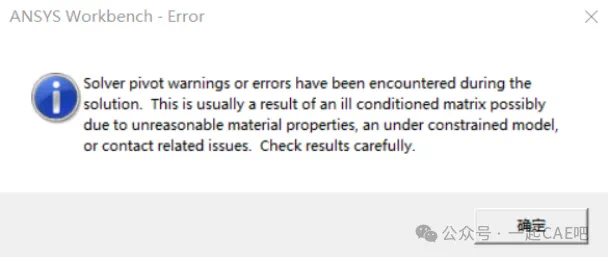In structural simulation analysis, it’s essential to apply sufficient constraints to ensure that results can be computed correctly. This necessity arises because structural simulation seeks to solve the following equation:
![]()
where MMM is the mass matrix, KKK is the stiffness matrix, PPP is the external load, and ddd represents the displacements at the nodes.
In finite element analysis, if the structure is unconstrained or under-constrained, the stiffness matrix becomes singular (i.e., its determinant is zero), leading to a non-unique solution. This condition, often referred to as the existence of rigid body motion, can prevent the software from solving the equations or result in implausible outputs, such as the structure “flying away.” This leads to inaccurate displacement and stress results, and the software will typically generate error messages.
For example, ANSYS may display an error prompt, while Nastran might show Fatal 9050, and ABAQUS could indicate “Too many attempts made for this increment,” among other similar messages.
